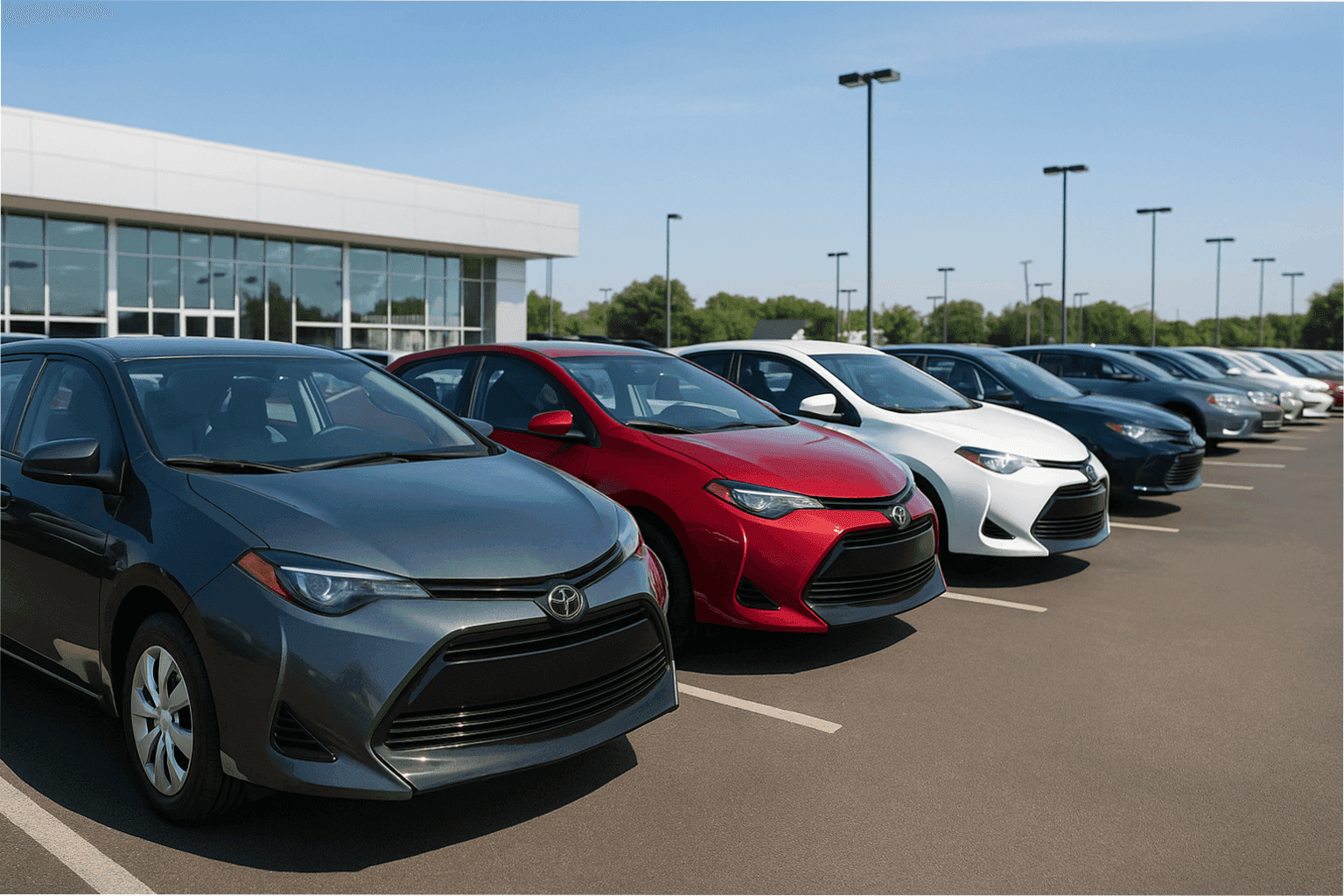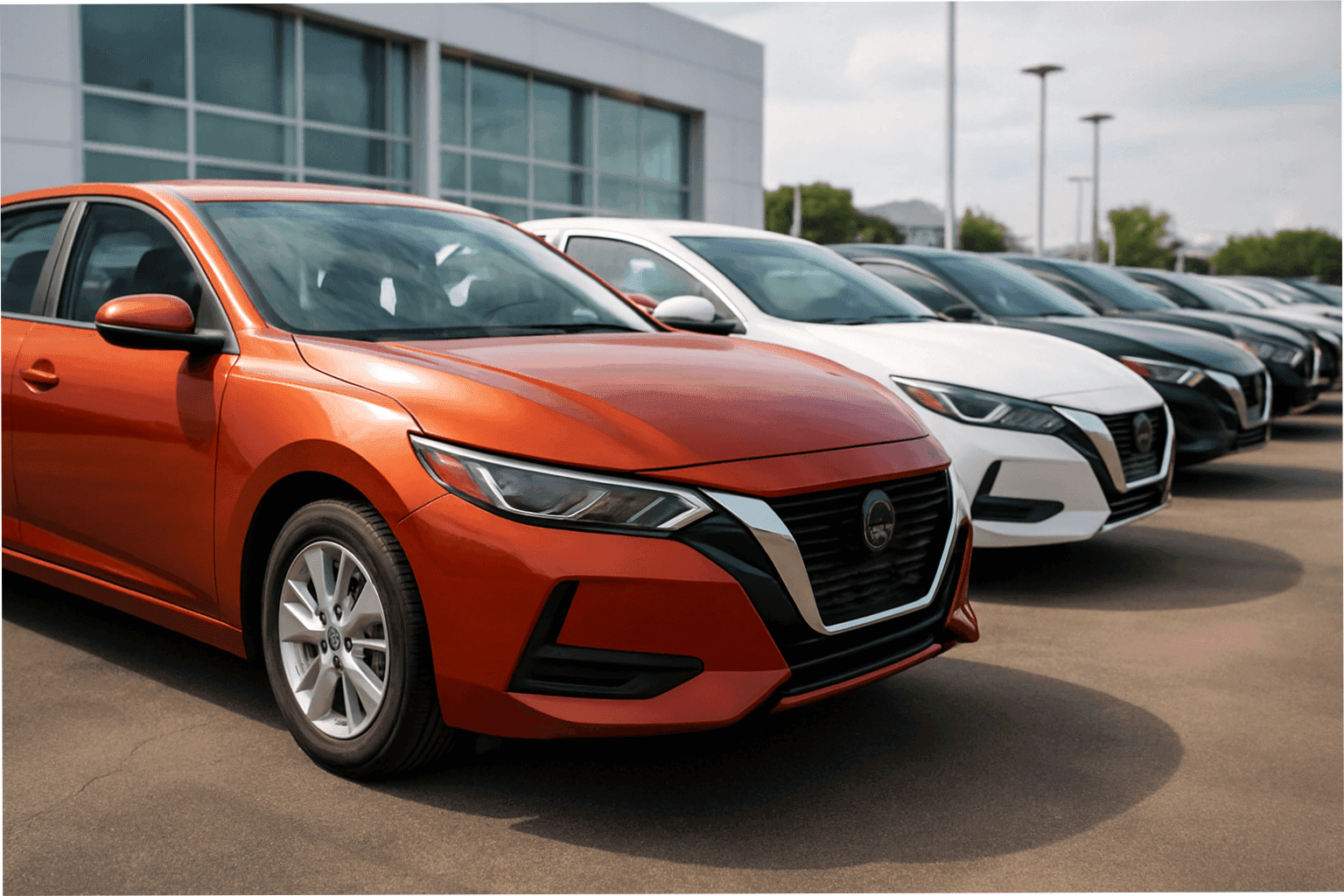Where Is It Most Cost-Effective to Buy a Car in the U.S. in 2025?
A Deep, State-by-State Breakdown of Pricing, Taxes, Market Trends, and Real Savings

Car prices in the United States can vary dramatically from one state to another — and not just by a few hundred dollars. In 2025, the gap between the cheapest and most expensive states to buy a vehicle can easily exceed $6,000–$9,000, depending on the model, sales taxes, insurance rates, and overall market supply.
This detailed guide breaks down where Americans can realistically save the most money when purchasing a new or used car, why certain states have the cheapest deals, and what to watch out for when buying out of state.
No fluff. No generic advice. Only data-backed analysis, real examples, and practical recommendations for today’s market.
Why Car Prices Differ So Much Across States
Before comparing states, it’s important to understand what actually creates price differences. The reason isn’t just taxes — it’s a combination of multiple economic and regulatory factors.
1. Sales Tax & State Fees
Sales tax ranges from 0% to over 10%, depending on location. This alone can add $2,000+ to the total cost of a mid-priced car.
Additionally:
Title fees
Registration costs
Documentation fees (dealer “processing” fees)
Local automotive taxes
…all contribute to the final out-the-door price.
2. Market Supply
States with:
large rental fleets
high volume of lease returns
competitive dealer networks
often have significantly lower prices.
Florida and Texas are great examples.
3. Demand & Demographics
States with:
high incomes
crowded metropolitan areas
strict emissions laws
tend to have more expensive vehicles.
Think California or New York.
4. Insurance Rates
Insurance is not included in the sticker price, but it impacts total cost of ownership. Some states have insurance premiums 2–3x higher than others.
5. Climate
Dry-weather states (Arizona, Nevada, parts of Texas) tend to have vehicles with better condition over time.
Coastal states may experience rust or water-related issues.
States Where Buying a Car Is the Most Cost-Effective in 2025
1. Florida — The Most Competitive Car Market in the U.S.
Florida is the #1 state for buyers who want the best price across a wide variety of models.
Why Florida is so cheap:
One of the nation’s largest auto markets
Saturation of rental fleet vehicles (Miami, Orlando, Tampa)
Continuous rotation of lease returns
High dealer competition — price-cut wars
Large immigrant population → consistent sales turnover
No vehicle inspections → lower dealer operating costs
Sales Tax & Fees
Sales tax: 6%
County surtax: up to 1.5%, depending on location
Average dealer doc fee: $80–$120
Still much lower than many other states.
Market Examples (2025)
2022 Toyota Corolla LE
National average: $19,900–$21,000
Florida: $17,800–$18,700
→ Savings: $1,200–$2,300
2023 BMW X3 xDrive30i
National average: $38,500–$41,000
Florida: $34,500–$36,200
→ Savings: $3,000–$4,500
Best For:
Sedans
Compact SUVs
Ex-rental vehicles
First-time buyers looking for affordability
2. New Hampshire — Zero Sales Tax = Guaranteed Savings
New Hampshire is unique for one powerful reason: there is no sales tax at all.
This becomes especially valuable when buying mid-range and premium vehicles.
Advantages:
0% sales tax
Low registration fees
Easy out-of-state purchases
Low population density → less competitive buying pressure
Market Examples (2025)
2024 Toyota Highlander XLE (new)
State with 7% tax: $43,000 + $3,010 tax → $46,010
New Hampshire: $43,000 total
→ Guaranteed savings: $3,000+
2021 Subaru Forester Premium
Other states: $26,500
NH price: $26,500 (no tax)
→ Savings: $1,500–$2,200
Best For:
Buyers of new cars
Buyers of family SUVs
Premium models (BMW, Lexus, Volvo, Tesla)
3. Oregon — Zero Sales Tax + Strong Supply
Oregon is another 0% sales tax state, which alone puts it in the top tier.
But there’s more: Oregon has a surprisingly strong used car market.
Why Oregon is cost-effective:
0% tax (massive advantage)
Lower insurance rates than WA or CA
Less vehicle wear due to mild climate
Increasing supply from Portland metro area
Popular destination for Californians buying cars
Market Examples (2025)
2023 Tesla Model 3 RWD (new)
California final price: $40,990 + ~9% tax = $44,600
Oregon final price: $40,990
→ Savings: $3,600–$4,000
2022 Honda Civic EX
OR price: $21,000–$22,000
CA price: $23,500–$25,000
Best For:
EVs
Sedans
Buyers from California looking to avoid high taxes
4. Virginia — A Stable, Predictable, Affordable Market
Virginia often flies under the radar, but it’s one of the most reasonably priced states for used cars.
Advantages:
Sales tax: 4.15%
Dealer fees capped (max processing fee is regulated)
Balanced supply-and-demand cycle
Strong competition between Richmond and Northern VA dealers
Market Examples (2025)
2022 Ford F-150 XLT
National average: $37,000–$39,000
Virginia: $35,000–$36,000
2023 Mazda CX-5 Touring
Virginia: $27,500–$28,300
NY/NJ: $30,000–$31,500
Best For:
Crossovers
Pickups
Practical family cars
Buyers who want consistency and transparency
5. Texas — Massive Inventory = Aggressive Pricing
Texas is a powerhouse in the automotive market.
Why Texas is cheap:
Enormous supply (Dallas, Houston, Austin)
Deep truck and SUV inventory
High dealership density → price wars
Many fleet trucks and work vehicles
Sales Tax
6.25%, but prices before tax are often lower
Market Examples (2025)
2021 RAM 1500 Big Horn
National: $38,000
Texas: $33,500–$35,000
2023 Chevrolet Tahoe LT
Other states: $55,000–$58,000
Texas: $50,000–$53,000
Best For:
Trucks
Full-size SUVs
Fleet buyers
Buyers needing aggressive dealer incentives
6. Ohio — Excellent Value for Used Cars
Ohio consistently offers below-average prices for used vehicles due to:
Low dealer documentation fees
Strong supply
Balanced economy
Affordable insurance
Market Examples (2025)
2022 Subaru Outback Premium
Ohio: $27,500–$28,500
National: $29,500–$31,000
2020 Toyota RAV4 LE
Ohio: $20,000–$22,500
National: $22,000–$25,000
Best For:
Practical, mid-price SUVs
Reliable Japanese brands
Buyers on a budget
7. Arizona — Ideal for Clean, Dry-Climate Vehicles
Arizona is unique because of its climate. Vehicles here:
rust less
avoid salted winter roads
retain better paint and underbody condition
attract out-of-state buyers annually
Sales Tax
5.6%, but often balanced by lower vehicle wear
Market Examples (2025)
2021 Toyota 4Runner SR5
Arizona: $32,500–$35,000
California: $37,000–$39,000
2019 Lexus GX460
Arizona: $33,000–$36,000
Northeast states: $37,500–$42,000
Best For:
Off-road vehicles
SUVs
Buyers concerned about long-term durability
States Where Cars Are More Expensive in 2025
Not all markets are friendly to buyers. Some states have significantly higher prices due to taxes, competition, regulations, and insurance.
1. California — High Taxes + High Demand
California buyers face:
Sales tax up to 10.25%
High demand
EV premiums
Strict emission laws
Dealer fees higher than national average
2. New York — High Fees and Cost of Living
Doc fees often exceed $500
Insurance among the highest in the U.S.
High demand in NYC metro area
3. Washington — One of the highest tax burdens
Sales tax: 10–10.5%
Extra DMV add-ons
More expensive new vehicles than Oregon
Best State by Category (2025)
Category | Best State |
|---|---|
Lowest overall prices | Florida |
Cheapest taxes | New Hampshire / Oregon |
Best for buying EVs | Oregon |
Best climate for used cars | Arizona |
Best for trucks | Texas |
Most transparent fees | Virginia |
Best for sedans | Florida, Ohio |
Buying Out of State: What Americans Should Know
An honest checklist for 2025 buyers:
1. Check your home-state registration taxes
Some states (ex: CA, WA) will still charge their tax when you register the car back home.
2. Confirm emissions compatibility
Especially important if buying:
diesel vehicles
performance cars
older models
vehicles from states with different standards
3. Arrange a pre-purchase inspection
States like Florida and Texas have huge markets, but also:
flood vehicles
auction flips
heavily used rental cars
salvage-title rebuilds
Use a 3rd-party inspector.
4. Beware of “doc fee inflation”
High-fee states:
NY
NJ
WA
CA
Low-fee states:
FL
OH
VA
5. Evaluate shipping cost
Shipping across the U.S.:
$700–$1,500, depending on distance.
Still often worth it.
Final Verdict: Where Is It Most Cost-Effective to Buy a Car in 2025?
After analyzing taxes, fees, market saturation, supply cycles, insurance, and actual 2025 dealer pricing, the best states are:
1. Florida — Best overall deals, biggest choice, strongest competition
2. New Hampshire — Zero sales tax = guaranteed savings
3. Oregon — Zero sales tax + strong EV and sedan market
4. Texas — Perfect for trucks, SUVs, and high-volume buying
5. Virginia — Stable pricing and low, regulated fees
For most households in 2025, Florida provides the best average savings, but New Hampshire and Oregon provide the biggest savings on new and premium vehicles.
More from Car Market

What’s Happening in the U.S. Car Market Right Now: Price Trends, Demand Shifts, and Key Reasons Behind Them
A 2025 Deep Dive Into Pricing Dynamics, Market Behavior, and Consumer Demand
21.11.2025 13:23
What Will Happen to New Car Prices in 2026?
A Detailed Forecast of U.S. New Vehicle Pricing, Market Forces, and Buyer Expectations
21.11.2025 12:31